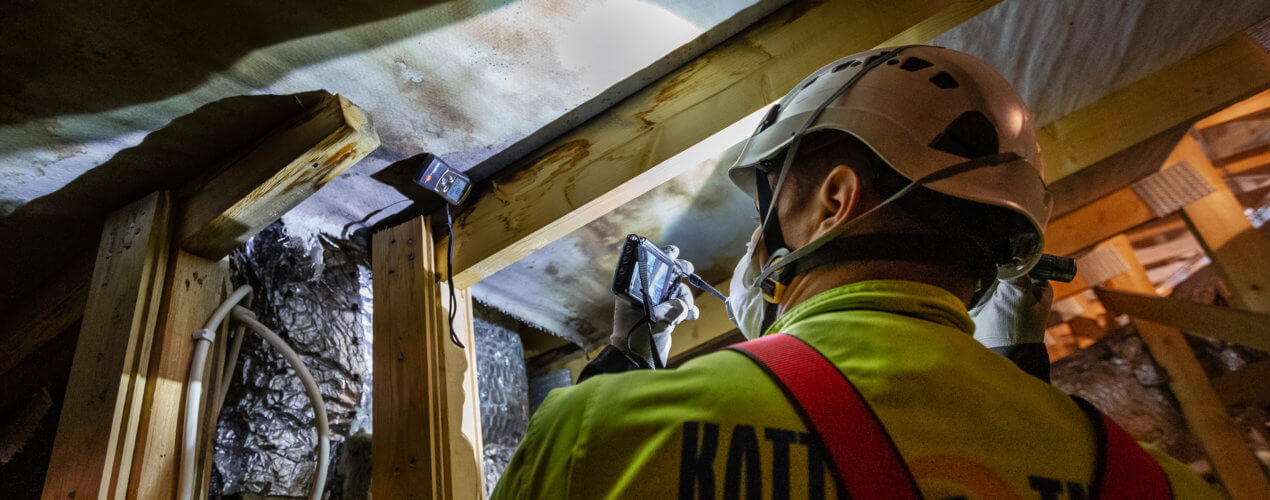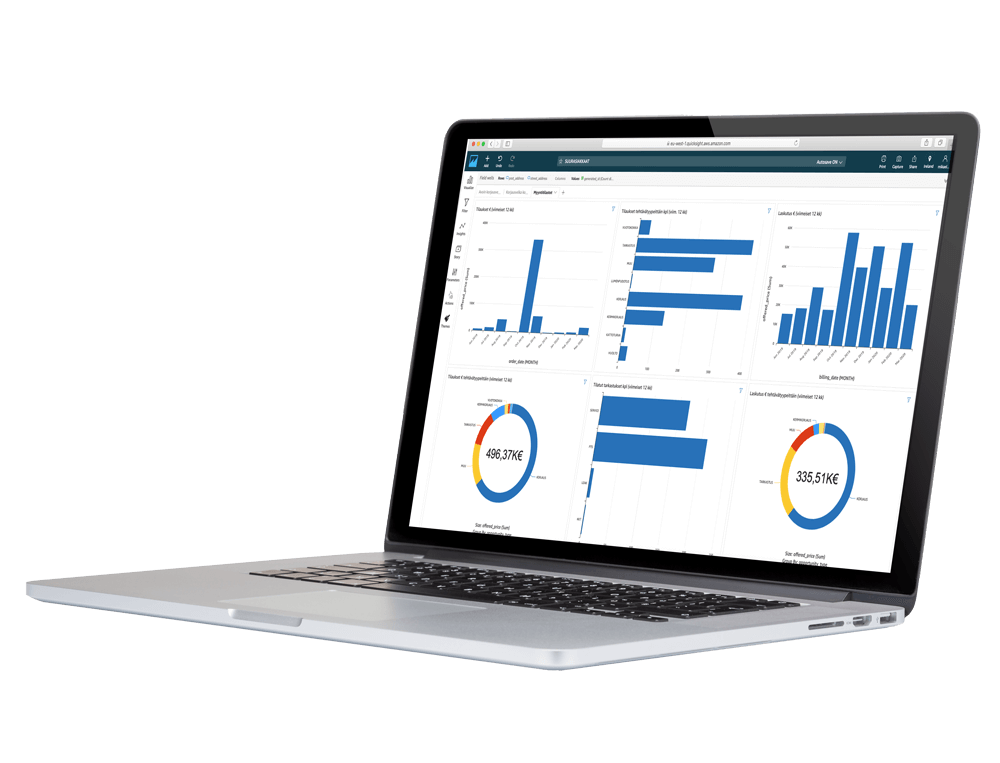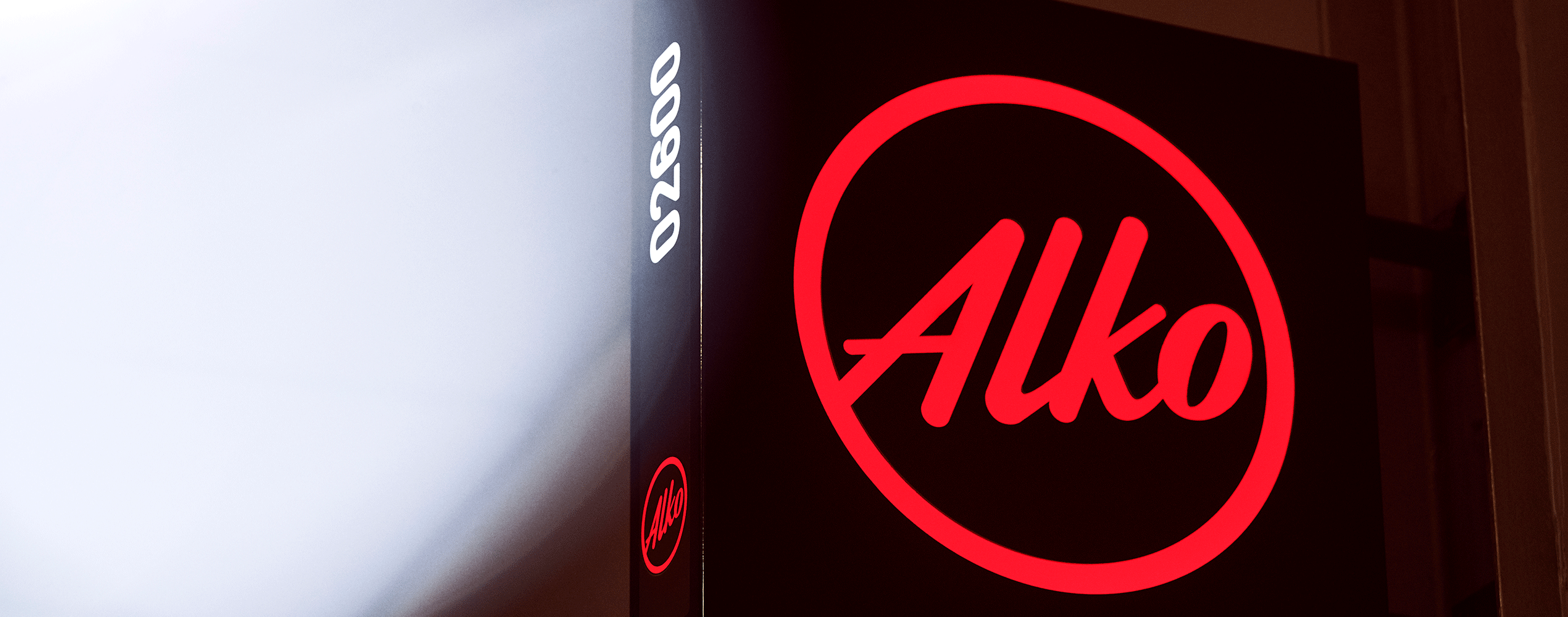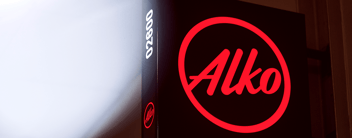Digitalized services improved customer experience and gave a boost to business
Kattotutka Oy is a Finnish roof service and product specialist that employs 250 roofing professionals. In 2019, the turnover of the company was 25.8 million euros.
Kattotutka Oy is a Finnish roof service and product specialist that wanted to digitalize its operations, develop its customer experience and improve its competitiveness. Our jointly developed, customized ERP solution has allowed Kattotutka to become more flexible and to manage its operations more efficiently. The ERP also allows Kattotutka customers who manage several properties to see all the relevant information at once. Data management has never been easier.


Streamlining operations
Vincit and Kattotutka’s cooperation began in 2018, when Kattotutka wanted to digitalize the company’s operations and improve its competitiveness by developing a custom-made ERP solution. At the time, the company was using several stand-alone systems, which resulted in overlaps in data entry. The situation was obviously less than ideal, and the existing off-the-shelf solutions didn’t seem to offer any easy fixes to the problem.
The goal of our cooperation was to modernize the company’s operations and to develop Kattotutka’s competitiveness by streamlining and boosting the business with the help of a custom-made system.
We’ve worked in close cooperation, and it feels like Vincit has been able to grasp what our company does. The people at Vincit are nice to work with, and they’re clearly experts at what they do. I’d say our cooperation has gone very smoothly.
Heikki Lindgren, CEO, Kattotutka
A fully customized system
Our cooperation began by developing a digital service used in connection with roof inspections. During the first stage, we automatized a set of roof inspection reporting tools that allowed inspectors to enter their observations directly into the system during inspections.
The development of each set of functions started with service design: first, we acquired a detailed understanding of the work carried out by the people at Kattotutka. We conducted interviews that provided us with a good general overview, but we also found it important to visit the rooftops to see what the inspectors actually did in practice.
The goal of service design was to get rid of any unnecessary steps that the use of the existing tools had created in the workflow. The customized system helped to improve the situation in two ways:
-
The UIs could be built to provide data and functions that the work stages required. The views provided reflect the different work stages, which means that the user doesn’t have to constantly switch between different views. Instead, each stage of the work can be handled in the same view from start to finish.
-
When the system is custom-built, all relevant data can be made available in the correct format. There’s no need to manually transfer data from one program or view to another anymore. Instead, all data transfers take place in the background.
An example of this is the so-called Map of Observations. Previously, the inspector had to manually prepare a diagram of all roof repair needs, which was time-consuming. In addition, as the resulting map was part of the report document, the repair team had to spend some time digging it up before getting started with their work.
Now the inspector only has to mark the location of each observation on a photo taken by a drone. The map gets automatically included in the report, and the location data is easily accessible to the roofers.
The digitalization of the report increased its quality, consistency and comprehensiveness and sped up the inspectors’ work. The report can be prepared without extensive IT skills.
After finishing the inspection functionality, Kattotutka’s competitiveness was improved by digitalizing the processes of the company one by one. The work included, for example, the development of sales and work management services. A comprehensive ERP system began to take shape with each finished functionality. Off-the-shelf applications have gradually been discarded.
One of the key success factors in the project was Kattotutka’s realization that the ERP had to support the company’s operations. This led us to solve business-specific challenges one by one. The functionalities we’ve built have been developed further throughout our cooperation using Agile methods.

Expertise used
Impact
The new ERP solution has significantly increased the company’s efficiency. The automation of several time-consuming routine tasks has enabled its employees to focus on more demanding tasks. Thanks to the advanced system, Kattotutka’s data has become easily manageable, and the employees are able to focus on the company’s core operations. The development rate allows Kattotutka to adopt new functionalities independently across the company and to get the maximum benefit out of the digital services.
The ERP system has benefitted the company’s customers as well. They’ve been able to receive their roof data in real time, filtered to their specific needs. The customized real time views make it easy to prepare forecasts and manage the total costs. The use of relevant, customer-specific data has had a positive impact on the customer experience.
Vincit and Kattotutka are set to continue their successful cooperation in future projects.




